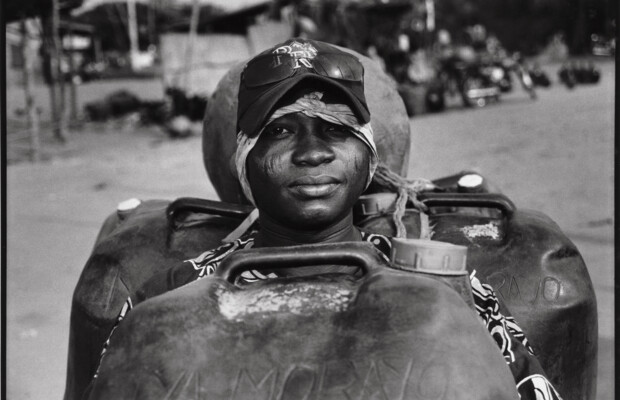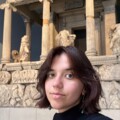Embracing Inclusion: Eliza Perez on her journey as the Curator of Outsider Art Gallery

In the ecosystem of contemporary art, inclusion stands as an ever-persistent goal, motivating curators to represent a wider range of people of all social backgrounds. This very sentiment is shared and reciprocated by Eliza Perez, a truly unique curator. Eliza’s passion for social work in the health care industry, namely Cordaan, an institution that advocates for uniquely tailored health care programs, found its home in an unconventional yet impactful setting: the Outsider Art Gallery.
Outsider art — a genre encompassing works created by individuals traditionally marginalized by society – those with disabilities, prisoners and ex-convicts, residents of psychiatric wards, and others in need of psychological or physical support – serves as a profound reminder of the boundlessness of art. Not only does it positively impact the participants of the Outsider Art Gallery initiative by acting as a form of art therapy, but its results show that artwork is oblivious to prejudice towards the person creating it.
By giving marginalized voices a platform, Perez not only celebrates their artistic contributions but also advocates for greater recognition and support within the broader art ecosystem. With this interview, I delve into Eliza's journey, exploring the transformative power of outsider art, and the impact it has in terms of the broader goal of promoting the "more inclusion and less prejudice" maxima in the art world.




P: You have a different background than the average art curator. Can you tell us more about it?
E: Yes, I originally started working as a project manager for the Dutch NGO health care company called Cordaan, which is one of the biggest healthcare companies in the Netherlands. The main project I'm working on right now is the Outsider Art Gallery, where I function as a supervisor and sort of curator.
P: What exactly is “Outsider art gallery”? Is it just a name or is there any special meaning behind it?
E: Well, like the name says, its art made by “outsiders” in the sense that they derive from the societal status quo. In our case, we work with artists who have a health care indication. Our gallery gives them a platform and helps counter the marginalization they face in society.
P: What distinguishes you from other art curators?
E: I don't work like a regular curator, as what we end up exhibiting is always according to the wishes of the people we work with. It’s not like I decide which art works are exhibited and what topic it should revolve around, we always ask the artists “what do you want to show and why?”. Not only do we ask the artists working in the gallery themselves, but also artists that are involved and participating in the project. Our current art exhibition for example is about freedom (ends 24 august 2024). That exhibition is initiated by a health care professional who works with a group of people with severe mental illness and they discuss topics such as racism, slavery and discrimination, revolving around the question what their definition of freedom is today. And they really wanted to exhibit it, and then of course we say “yes” if it is the wish of our clients. The only way that I personally influence the exhibitions in our gallery is that I ask other artists and partners of ours from Amsterdam to add their own works and see how we can make the exhibition bigger or more interesting. There are some decision points on what we show and what we don’t, but mainly it's up to the artists we work with in our program.
P: How is the process of “taking the artists in” organized? Who exactly is eligible for the program and what are the criteria to be accepted into the program?
E: Good questions, at the moment we have about 25 artists who work here and we have two or three spots free for new artists. Before I started here, there was always an interview with the gallery owner in order to be selected for our gallery. The applicants needed to bring their portfolio and do an interview. Then the gallery owner makes a decision on whether that person brings something new to the group of artists. However, at this moment we work a bit differently. We do still ask applicants for their portfolio, but we set more emphasis on their willingness to learn. But because our gallery works in cooperation with a healthcare organization, we also need to do the hardcore healthcare administration checks. So, for example, I have a colleague who checks the applicant's indication. In order to be allowed in our atelier, you need an indication for healthcare.
If you are willing to develop yourself as an artist, you are welcome here.
P: I’m wondering whether working and exhibiting at your gallery is the resident artist's main occupation?
E: Yes, they are all serious artists. We don’t call them clients and we don’t call our gallery a health care building. We’re not really focussing on what people can’t do and what their weakness is, but instead on what they can do and what makes them thrive. And we really take them as artists, seriously. Some of our artists' works are in museum collections. We don’t want people to think that our gallery's art is any different from other galleries. It’s super important that they take themselves and their own art seriously, which is also part of our health care initiative that fights against stigmatization and discrimination by building confidence and autonomy through art making, so it's important we do the same. But the artists that work here do need some extra support and attention, because for them it's more difficult to market themselves, manage their art, and thus we provide a platform for them. The center of our gallery is to give people a platform who cannot create a platform for themselves, to stand up for those who are being kept small and marginalized.
P: Are the artworks also for sale? And how do you sell the art in your gallery?
E: Well, that actually is something we need to develop more because we really want our artists' artworks to be seen. We have some customers who are collectors of outsider art who know our gallery and buy from us. Then, there are also Outsider Art Fairs, where some of our artists exhibit their work and sell pieces like this and make profit just like any other artist.We also work together with a lot of partners to exhibit like Pexpo, No limits art castle and atelier Heerenplaats. At the moment a group of portraits by artist Osmel Herman is on show at Amsterdam museum.
Also, we want our artworks to be accessible for as many people as possible, whether it be collectors or art-interested people with a small wallet.
One of our artists, Desmond, is elected for the Euward award the European art award, which is the biggest European Outsider art award. Some of his art is more expensive and I think in a couple of years he will be even more relevant, but to keep our wish for inclusivity, we also have some of his work go for a lower price. That is what I really like about this place, because it is part of an NGO health care initiative. We are not only focussing on sales and getting profit. We focus more on getting the art into the world.

P: What other exhibitions have you done so far?
E: We also show works from artists that don’t work in our ateliers. The exhibition we had on show earlier this year was made by people being in closed institutions, such as prisons or mental health clinics, that can’t go outside into the world. Therefore we want to give them the opportunity to share their voices to the outside world.
P: Why do you think it’s important to give those who are “outsiders” the opportunity to participate in the art world?
E: Because more often than not they don’t get the opportunity at other galleries. I think our initiative is so important, given that people with disabilities - whether it be mental illness or developmental disability - have difficulties getting into regular art galleries because of all kinds of reasons. It can be because of ableism, their difficulty in managing their own work inventory, or directing their creative energy without guidance. We provide that support.



As it became evident in the interview, Eliza sees the success of outsider art as proof that we often underestimate artists with disabilities and fail to recognize their talents and capabilities. Their achievements show that the quality of an artist is not undermined or defined by a psychological diagnosis, handicap, or a physical or mental impairment. In her role as curator, Eliza encourages and together with the team leads artists in their creative process, offering them guidance and a platform to share their unique perspectives and narratives with the world. When visiting the gallery, I got to meet some of the artists and observe them while they were hard at work, -- painting or sketching their next piece of art. Each artist has their unique style and artistic language, which left me both impressed and curious to see more of their art and dig deeper into Eliza’s non-profit health care initiative. While to the artists in the program, making art serves as a sort of art therapy, helping them to cope with their mental health, they also simply find joy in belonging to a community of like-minded people, which is exactly what makes the outsider art gallery so special.
As our talk with Eliza was reaching its end, I felt deeply inspired by the spirit she brings to her project. The way she talked about the importance of including marginalized groups into the art world and what beautiful fruits ripen from those efforts made me realize that, despite things seeming hopeless at times, a handful of people can actually create a transformative impact on countless lives. The Outsider Art Gallery is an excellent example of this. Meeting Eliza and some of the artists in person while visiting the gallery broadened my horizons personally, leaving me feeling optimistic about the future of art curating.
Share the post:














